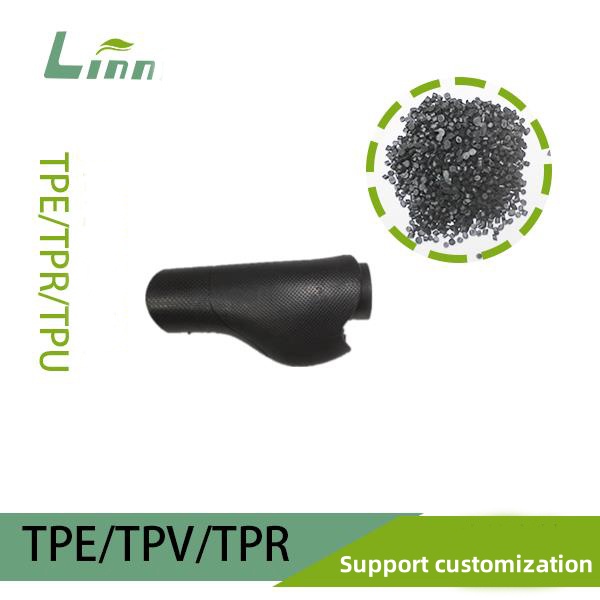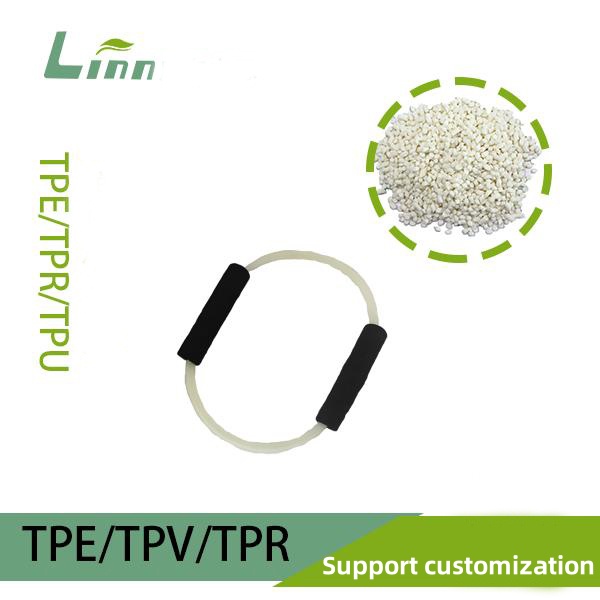Having worked in the plastic granulation industry for years, I know firsthand how frustrating it can be when a TPR (thermoplastic rubber) granulator fails to cool properly. Inadequate cooling not only affects pellet quality but can also reduce production efficiency and even damage equipment. When a TPR granulator doesn’t cool down, the issue could stem from various factors, from cooling system design to operational errors. In this article, I’ll draw on my practical experience to analyze the causes of cooling issues and provide actionable solutions to get your production back on track.
Why Doesn’t the TPR Granulator Cool Down?
TPR materials, due to their high elasticity and heat sensitivity, have stringent cooling requirements. If the granulator’s cooling system underperforms, pellets may stick together, deform, or have rough surfaces. The core reasons for cooling failure typically fall into categories like cooling system malfunctions, improper parameter settings, environmental factors, or inadequate equipment maintenance. I’ll break down each issue and share specific troubleshooting and solutions.

Common Causes and Troubleshooting Methods
1. Cooling System Hardware Issues
The cooling system is the heart of a TPR granulator, whether it’s water-cooled, air-cooled, or a hybrid system. Any hardware issue can directly impair cooling performance. Here are common hardware problems I’ve encountered and how to troubleshoot them:
Insufficient Cooling Water Flow: Check if the water pump is functioning properly and if the pipes are clogged. You can touch the pipes to feel if water flow is smooth. Weak flow may indicate a pump issue or debris in the pipes.
High Cooling Water Temperature: Inspect the cooling tower or chiller’s operation. If the water temperature exceeds 30°C, cooling efficiency drops significantly. Use a thermometer to measure inlet and outlet water temperatures, ensuring the difference is within the normal range (typically 5-10°C).
Inadequate Air-Cooled System Airflow: For air-cooled granulators, verify that the fan is running and that blades are free of dust buildup. Use an anemometer to measure airflow and ensure it meets equipment specifications.
Clogged Heat Exchanger: Prolonged use can cause scaling inside the heat exchanger, reducing heat transfer efficiency. Inspect and clean with a chemical cleaner if necessary.
My Experience: Once, while troubleshooting at a client’s factory, I found that cooling water pipes were clogged with scale, reducing flow to 50% of normal. After cleaning the pipes and replacing the filter, cooling performance improved immediately, and pellet quality enhanced.

2. Improper Process Parameter Settings
TPR granulation parameters directly impact cooling performance. Temperature, screw speed, and traction speed are three critical factors, and incorrect settings can cause material overheating, overwhelming the cooling system.
Excessive Extrusion Temperature: TPR is typically processed at 160-200°C. If the temperature exceeds 220°C, the material enters the cooling zone too hot, making it hard for the system to cool effectively. Check the temperature controller to ensure each zone is within the recommended range.
High Screw Speed: Excessive screw speed increases frictional heat. Adjust the speed according to the equipment manual, typically between 50-100 rpm.
Mismatched Traction Speed: If traction speed is too fast, the material doesn’t stay in the cooling zone long enough. Slowing the traction speed (e.g., from 10 m/min to 8 m/min) can extend cooling time.
Case Study: I assisted a TPR shoe material manufacturer with a cooling issue. Their extrusion temperature was set at 230°C, far above the ideal range for TPR. I recommended lowering it to 190°C and reducing traction speed by 10%. The cooling issue improved significantly, with pellet sticking reduced from 20% to 2%.
3. Environmental Factors
The production environment can significantly affect cooling performance, particularly ambient temperature and humidity.
High Ambient Temperature: In summer, factory temperatures can exceed 35°C, impacting water or air cooling. Improve factory ventilation or add fans near the cooling tower.
High Humidity: High humidity can reduce water evaporation efficiency in water-cooled systems. Consider using a dehumidifier to improve the environment.
Poor Air Circulation: Ensure no obstacles block airflow around the equipment, especially for air-cooled systems.
My Tip: If your factory is in a hot, humid region, consider investing in industrial air conditioning or enhancing ventilation. Over time, this can significantly improve equipment stability and production efficiency.

4. Inadequate Equipment Maintenance
Without regular maintenance, a TPR granulator’s cooling system efficiency will decline over time. Here are common maintenance issues:
Clogged Filters: Filters in the cooling water system can clog if not cleaned regularly, restricting water flow. Clean them every three months.
Scaled Cooling Tank: Residue or scale buildup on the cooling tank’s inner walls reduces heat exchange efficiency. Clean regularly with a soft brush.
Dusty Fan Blades: Dust on air-cooled system fan blades reduces airflow. Check and clean monthly.
My Experience: I once encountered a granulator with high cooling water temperatures due to severe scaling in the cooling tank. After cleaning, the water temperature dropped by 8°C, significantly improving pellet quality.
Solutions Summary Table
To help you quickly address cooling issues, here’s a table summarizing common problems and solutions:
|
Issue |
Possible Cause |
Solution |
Expected Outcome |
|---|---|---|---|
|
Insufficient cooling water flow |
Pump failure, clogged pipes |
Check pump, clean pipes, replace filter |
Restored water flow, improved cooling |
|
High cooling water temperature |
Low cooling tower efficiency |
Inspect tower, increase water circulation |
Water temperature drops 5-10°C |
|
Poor air-cooled system performance |
Fan failure, dusty blades |
Check fan, clean blades |
Restored airflow, better pellet quality |
|
Excessive extrusion temperature |
Improper temperature settings |
Lower to 160-200°C |
Reduced material heat, less cooling load |
|
Excessive traction speed |
Insufficient cooling time |
Reduce traction speed |
Reduced pellet sticking, stable quality |
Advanced Optimization: Boosting Cooling Efficiency
After resolving basic issues, you may want to further optimize cooling performance to enhance production efficiency. Here are advanced methods I’ve used in practice:
1. Upgrade the Cooling System
If your equipment is outdated, consider upgrading the cooling system. For example, increasing cooling tower capacity or switching to a more efficient chiller. I once helped a client upgrade from a single-tower to a dual-tower cooling system, reducing water temperature from 35°C to 25°C and boosting production efficiency by 15%.
2. Optimize Material Formulation
TPR formulations can affect cooling needs. Work with your raw material supplier to adjust plasticizer or filler ratios to lower processing temperatures. For instance, increasing low-melting-point plasticizer by 5% can reduce processing temperature by 10°C, easing the cooling system’s burden.

3. Smart Monitoring Systems
Install temperature and flow sensors to monitor the cooling system in real time. If water temperature or flow deviates, the system can alert you, reducing troubleshooting time. I implemented such a system in a large factory, cutting downtime by 30%.
4. Regular Maintenance Plan
Create a detailed maintenance schedule, including monthly filter cleaning, quarterly heat exchanger inspections, and annual system overhauls. Preventive maintenance saves more than reactive repairs.
My Real-World Case Study
Last year, I helped a factory producing TPR cable materials resolve a cooling issue. Their pellets had rough surfaces and frequent sticking. After investigation, I identified:
Cooling water temperature at 38°C, well above normal.
Extrusion temperature set at 220°C, causing material overheating.
Significant scale buildup in the cooling tank, reducing heat exchange efficiency.
Solution Steps:
Cleaned the cooling tower and pipes, lowering water temperature to 28°C.
Adjusted extrusion temperature to 185°C and reduced traction speed by 10%.
Thoroughly cleaned the cooling tank and implemented monthly maintenance.
As a result, pellet sticking dropped from 15% to 1%, production efficiency increased by 20%, and customer complaints about pellet quality nearly vanished.

Key Considerations: Avoiding Common Pitfalls
When addressing cooling issues, here are some easily overlooked details to avoid pitfalls:
Don’t Blindly Increase Water Flow: Excessive water flow can cause unstable pressure, reducing cooling efficiency. Focus on ensuring appropriate water temperature first.
Avoid Frequent Parameter Tweaks: After adjusting parameters, monitor production data for at least 2 hours to confirm stability.
Calibrate Sensors Regularly: Inaccurate temperature or flow sensors can lead to misdiagnosis. Calibrate every six months.
Consider Material Variations: Different TPR batches may have slight differences. Verify formulation parameters before processing.
Conclusion: Keep Cooling Issues at Bay
When a TPR granulator doesn’t cool properly, it may seem daunting, but systematic troubleshooting across hardware, process, environment, and maintenance can resolve the issue. Start with simple checks like cleaning pipes or verifying water temperature, then optimize parameters and systems as needed. My hope is that this guide provides a clear roadmap to restore your granulator’s efficiency and improve pellet quality. If you encounter other challenges, feel free to share them in the comments, and I’ll do my best to help!

Related Q&A
1. What’s the ideal cooling water temperature for a TPR granulator?
Typically, cooling water should be 20-30°C, with a 5-10°C difference between inlet and outlet. If the temperature is too high, check the cooling tower or increase water circulation.
2. What if the air-cooled system isn’t effective?
Verify fan operation and clean dusty blades. If airflow remains low, consider adding auxiliary fans or upgrading to a higher-power fan.
3. How soon can I see results after adjusting process parameters?
Changes in temperature or traction speed typically show results within 1-2 hours. Make small adjustments and monitor data consistently.
4. What precautions should I take when cleaning the cooling tank?
Use a soft brush and neutral cleaner to avoid damaging the tank’s inner walls. Rinse thoroughly to prevent residue from affecting material quality.
5. How can I tell if the cooling issue is hardware or parameter-related?
First, check hardware (pump, pipes, fan) for proper operation. If hardware is fine but the issue persists, it’s likely due to improper parameter settings.





